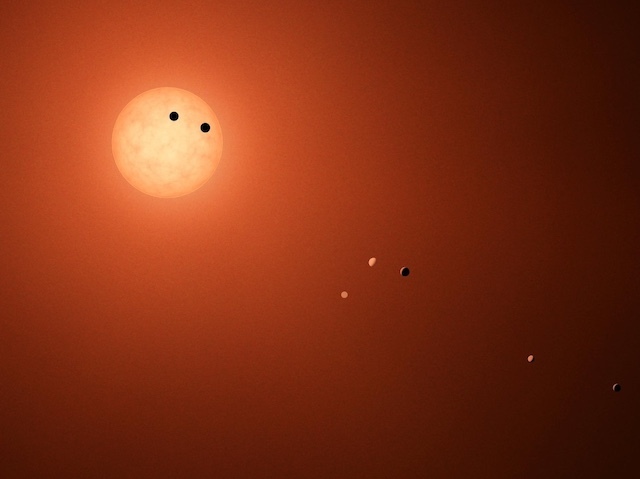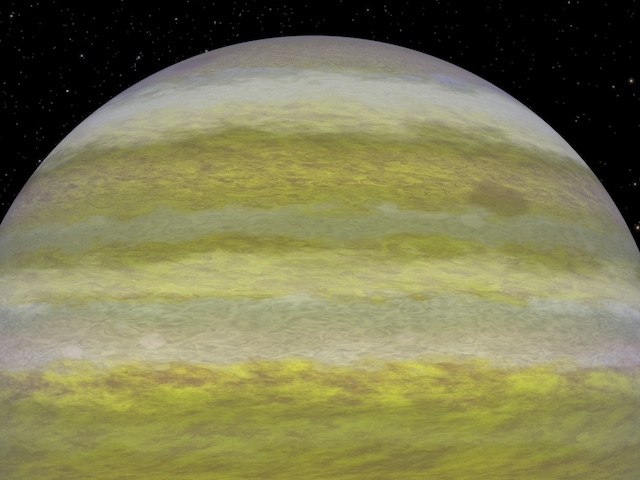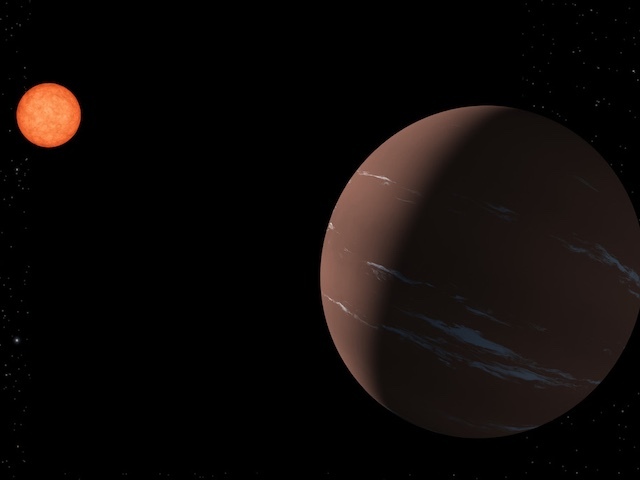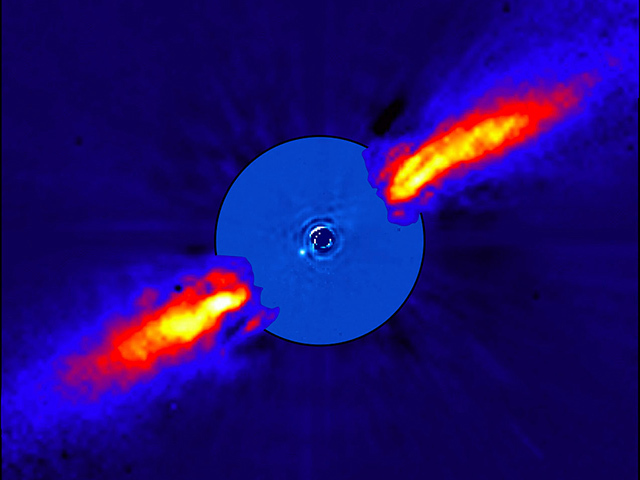News | February 20, 2019
In Colliding Galaxies, a Pipsqueak Shines Bright
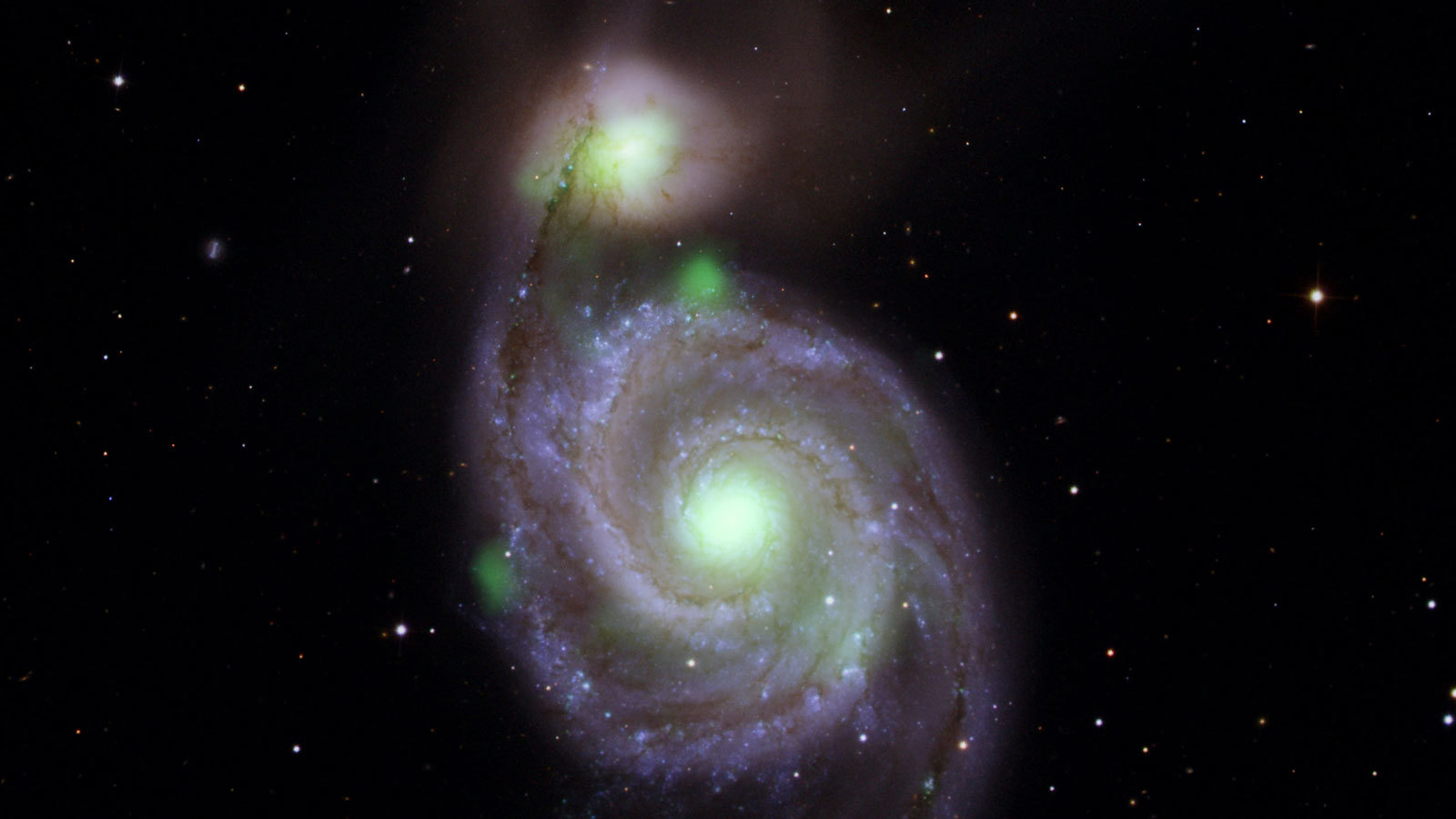
Bright green sources of high-energy X-ray light captured by NASA's NuSTAR mission are overlaid on an optical-light image of the Whirlpool galaxy (in the center of the image) and its companion galaxy, M51b (the bright greenish-white spot above the Whirlpool), taken by the Sloan Digital Sky Survey. Credit: NASA/JPL-Caltech, IPAC
› Larger view
In the nearby Whirlpool galaxy and its companion galaxy, M51b, two supermassive black holes heat up and devour surrounding material. These two monsters should be the most luminous X-ray sources in sight, but a new study using observations from NASA's NuSTAR (Nuclear Spectroscopic Telescope Array) mission shows that a much smaller object is competing with the two behemoths.
The most stunning features of the Whirlpool galaxy - officially known as M51a - are the two long, star-filled "arms" curling around the galactic center like ribbons. The much smaller M51b clings like a barnacle to the edge of the Whirlpool. Collectively known as M51, the two galaxies are merging.
At the center of each galaxy is a supermassive black hole millions of times more massive than the Sun. The galactic merger should push huge amounts of gas and dust into those black holes and into orbit around them. In turn, the intense gravity of the black holes should cause that orbiting material to heat up and radiate, forming bright disks around each that can outshine all the stars in their galaxies.
But neither black hole is radiating as brightly in the X-ray range as scientists would expect during a merger. Based on earlier observations from satellites that detect low-energy X-rays, such as NASA's Chandra X-ray Observatory, scientists believed that layers of gas and dust around the black hole in the larger galaxy were blocking extra emission. But the new study, published in the Astrophysical Journal, used NuSTAR's high-energy X-ray vision to peer below those layers and found that the black hole is still dimmer than expected.
"I'm still surprised by this finding," said study lead author Murray Brightman, a researcher at Caltech in Pasadena, California. "Galactic mergers are supposed to generate black hole growth, and the evidence of that would be strong emission of high-energy X-rays. But we're not seeing that here."
Brightman thinks the most likely explanation is that black holes "flicker" during galactic mergers rather than radiate with a more or less constant brightness throughout the process.
"The flickering hypothesis is a new idea in the field," said Daniel Stern, a research scientist at NASA's Jet Propulsion Laboratory in Pasadena and the project scientist for NuSTAR. "We used to think that the black hole variability occurred on timescales of millions of years, but now we're thinking those timescales could be much shorter. Figuring out how short is an area of active study."
Small but Brilliant
Along with the two black holes radiating less than scientists anticipated in M51a and M51b, the former also hosts an object that is millions of times smaller than either black hole yet is shining with equal intensity. The two phenomena are not connected, but they do create a surprising X-ray landscape in M51.
The small X-ray source is a neutron star, an incredibly dense nugget of material left over after a massive star explodes at the end of its life. A typical neutron star is hundreds of thousands of times smaller in diameter than the Sun - only as wide as a large city - yet has one to two times the mass. A teaspoon of neutron star material would weigh more than 1 billion tons.
Despite their size, neutron stars often make themselves known through intense light emissions. The neutron star found in M51 is even brighter than average and belongs to a newly discovered class known as ultraluminous neutron stars. Brightman said some scientists have proposed that strong magnetic fields generated by the neutron star could be responsible for the luminous emission; a previous paper by Brightman and colleagues about this neutron star supports that hypothesis. Some of the other bright, high-energy X-ray sources seen in these two galaxies could also be neutron stars.
NuSTAR is a Small Explorer mission led by Caltech and managed by JPL for NASA's Science Mission Directorate in Washington. NuSTAR was developed in partnership with the Danish Technical University and the Italian Space Agency (ASI). The spacecraft was built by Orbital Sciences Corporation in Dulles, Virginia (now part of Northrop Grumman). NuSTAR's mission operations center is at UC Berkeley, and the official data archive is at NASA's High Energy Astrophysics Science Archive Research Center. ASI provides the mission's ground station and a mirror archive. Caltech manages JPL for NASA
For more information about NuSTAR, visit:


